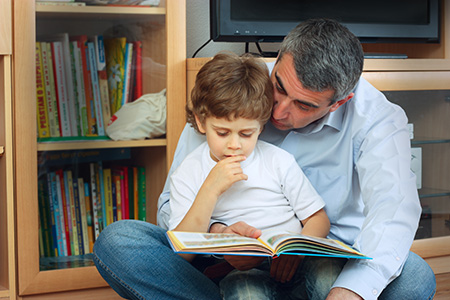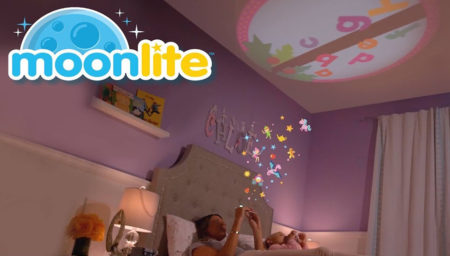A Speech Therapist’s Guide to Reading with your Child
The importance of reading with your child
As Speech Language Pathologists, we cannot stress enough the importance of reading books to your child. Reading helps build communication skills like auditory comprehension, expressive vocabulary, and memory, and it also builds world knowledge, all done with natural 1:1 interaction.

Ways to make reading more fun
Reading doesn’t have to be a quiet, page-turning activity where every single word on the page is read. As a matter of fact, most children’s books should not be read word for word! Here are some suggestions to making book reading more fun:
- Let your child read the book in his or her own way
- Talk about the pictures instead of reading the words
- Ask questions about the pictures
- Act out what is happening in the book using toys, or by play acting
- Turn books into a tactile activity by slapping Play-Doh on the pictures together and peeling it back to mimic lift the flap books.
How to use books to build your child’s language skills
Reading books provides numerous opportunities to learn language. Here are some easy things to do while reading with your child.

Use a variety of words to talk about the pictures
This means stray away from nouns (naming objects) and talk about words that describe (rough), action words (jump), locations (under) and words about time (later)
Highlight important words
Stress the important words or new vocabulary by changing your voice (make your pitch go up or down, change the rate of your speech by talking faster or slower)
Expand on what your child is telling you
Add more information to your child’s message. For example, if he or she says “baby shoes” you can expand by saying “The baby’s shoes are on her feet”. Adding on to the message shows your child how to make longer utterances.
Build on your child’s understanding
A great way to help your child understand is to relate it to a similar experience in his or her life. This will help them build a better connection between the book and something that has happened to him or her in the past.
Think outside the book
Encourage your child to think beyond the pages of the book to expand his or her thinking. You can help your child predict what might happen next, compare and contrast an object from the story to real life, make an inference and draw a conclusion, identify a problem and solution and sequence the events of the story by retelling what happened. These discussions will help your child to think, solve problems and imagine.
Combine books with technology
If you are still struggling with the battle between technology and books, consider a new spin on books: the Moonlite storybook projector. It was one of the top toys of 2017. Moonlite is an easy-to-use storybook projector that works with the flashlight on your mobile phone to turn some of your child’s favourite storybooks into vivid projections, complete with sound effects and background music. You can project big, bright storybook images onto your ceiling or wall creating a fun way to share reading with your child. Moonlite has several well-known, engaging stories on their reels such as “Goodnight Moon” and “Where is baby’s belly button?”. Parent and child can read-a-long with the projections.

Reading with your child is an experience
Reading can happen in all kinds of different ways. What a child learns from a shared reading experience is up to the parent and child during that specific interaction. No two interactions are the same, creating an unlimited number of book experiences.
